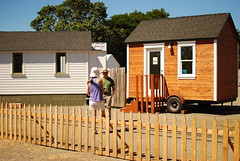Not only is it morally right, but preventing homelessness is also a social responsibility with broad ramifications. Homelessness is a complex issue that interacts with a number of socioeconomic variables, public health issues, and structural injustices. Society can lessen the negative impacts of homelessness and promote a more just and caring community by addressing the underlying causes of the problem and putting preventive measures in place. The negative impacts that homelessness has on the community as a whole make it one of the strongest arguments for prevention. Homelessness affects the workforce, puts a pressure on public safety protocols, reduces the availability of healthcare services, and costs taxpayers money.. Shaun Donovan said that homeless individuals face a significant financial burden of around $40,000 a year living on the streets. Furthermore, the RAND Corporation analysis highlights the financial advantages of preventative actions by showing the potential for significant cost reductions through investment in long-term housing solutions. In addition to its financial cost, homelessness has a serious negative impact on public health. People who live on the streets are more likely to contract infectious illnesses, experience violence, starvation, and extreme weather, which can exacerbate pre-existing health issues and lead to the development of new ones. According to research by the National Health Care for the Homeless Council, those who are homeless often die 12 years earlier than people in the general population and have worse rates of sickness. Not only is preventing homelessness a social justice issue, but it is also a vital public health requirement. The notion of housing as a human right is deeply ingrained in the Universal Declaration of Human Rights, yet the reality falls short for many. The struggle for adequate housing intersects with broader societal challenges, including transportation and climate change. which affect low-income families, while the recovery process often widens the gap between the rich and poor. Stephens also highlights the concept of climate gentrification, where affluent individuals relocate to less climate-vulnerable areas, displacing lower-income residents. This phenomenon underscores the need for transformative leadership to address the interconnected issues of housing justice and climate action. Moreover, homelessness exacerbates social injustices and prolongs cycles of poverty. Chronic health disorders, drug abuse, family problems, economic hardships, domestic violence abuse, and a lack of affordable housing are among the leading causes of homelessness. Without help, these individuals and families would be trapped in a never-ending cycle of unemployment, poverty, and homelessness. Hostile architecture, which is intended to keep homeless people out of public areas, marginalizes and exacerbates social exclusion, exacerbating the difficulties that people facing housing instability encounter. Preventing homelessness necessitates a multifaceted strategy that tackles the root causes and offers supporting services to vulnerable groups. Initiatives like the Green New Deal for Public Housing and community-owned housing schemes led by Ocasio-Cortez and Sanders, advocate for renewable, zero-carbon housing as a potential solution for sustainable development it also provide potential opportunities for systemic transformation. Communities can build a safety net to keep people and families out of homelessness by pushing for affordable housing, equal access to healthcare, and supporting social services. Finally, preventing homelessness is both a moral and practical need. By investing in prevention measures, society can relieve the financial burden, improve public health outcomes, and foster a more inclusive and compassionate community. It is incumbent upon policymakers, community leaders, and individuals alike to prioritize homelessness prevention and work towards creating a society where everyone has a place to call home.
“Sustainability cannot be simply a ‘green’, or ‘environmental’ concern, important though ‘environmental’ aspects of sustainability are. A truly sustainable society is one where wider questions of social needs and welfare, and economic opportunity are integrally related to environmental limits imposed by supporting ecosystems.”– Julian Agyeman
The concepts of the Great Turning, energy democracy, and climate justice are crucial in addressing homelessness because they provide a holistic framework for addressing the root causes of housing insecurity and promoting long-term solutions that prioritize social equity, environmental sustainability, and economic resilience. Firstly, the Great Turning emphasizes the need for a fundamental shift in consciousness and values towards recognizing our interconnectedness with the natural world. This shift can help challenge the underlying systems of exploitation and inequality that contribute to homelessness. By fostering a deeper understanding of our relationship with the environment and promoting a culture of stewardship and responsibility, the Great Turning can inspire collective action to address homelessness in ways that are sustainable and regenerative.Energy democracy is essential in addressing homelessness because it advocates for community control of renewable resources, ensuring that the benefits of clean energy are shared equitably among all members of society. Access to affordable and sustainable energy sources is critical for providing stable housing options and reducing the energy burden on low-income households. By empowering communities to own and manage their energy resources, energy democracy can help create pathways out of homelessness by providing reliable and affordable housing solutions powered by renewable energy. Similarly, climate justice is integral to addressing homelessness because it targets social, economic, and racial injustices exacerbated by climate change. Climate impacts such as extreme weather events, sea-level rise, and natural disasters disproportionately affect marginalized communities, including those experiencing homelessness. By advocating for policies and practices that promote equity and resilience, climate justice can help mitigate the effects of climate change on vulnerable populations and prevent displacement due to environmental factors.
. As tent cities and homeless encampments expand, many cities and towns are responding by passing new laws that make ir illegal to sleep on the streets. This move is part of a larger problem of criminalizing poverty, which perpetuates a cycle of disadvantage and suffering. When officials dismantle temporary living arrangements on the stroct or when they fine or arrest people for having no home to go to, they are adding additional hardship and uncertainty and exacerbating the problem. – Jennie Stephens
In summary, by focusing on principles like the Great Turning, energy democracy, and climate justice, we can tackle homelessness and build a fairer, greener future. Preventing homelessness isn’t just the right thing to do; it’s also practical. Investing in prevention saves money, improves health, and creates a society where everyone has a home. Let’s work together to make it happen.






